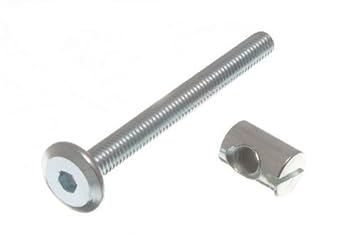transatlantic
Boom!
I want my next workbench to be somewhat dismantlable, and so I think I am going to have the long front rails be bolted to the legs. The side rails will be glued to the legs.
I am thinking of using some M10 bolts with barrel nuts, two per joint. The legs will be about 100x100mm and the rails 75x50mm.
Has anyone done this? ... how did you go about accurately aligning the bolt/nut? I guess if you don't get it spot on, you can just enlarge the hole for the barrel nut slightly?

I am thinking of using some M10 bolts with barrel nuts, two per joint. The legs will be about 100x100mm and the rails 75x50mm.
Has anyone done this? ... how did you go about accurately aligning the bolt/nut? I guess if you don't get it spot on, you can just enlarge the hole for the barrel nut slightly?














































